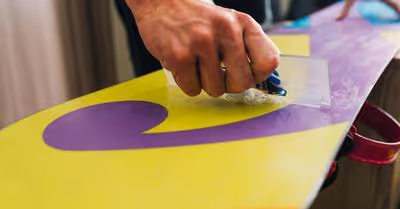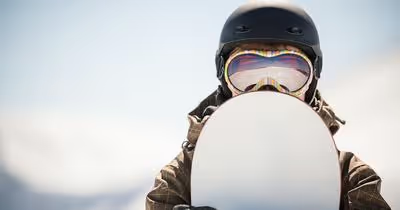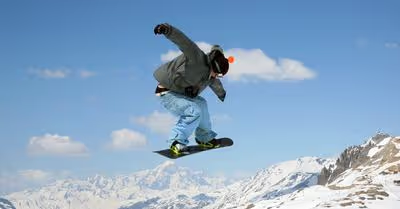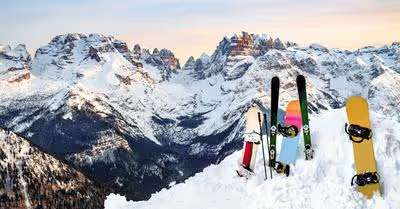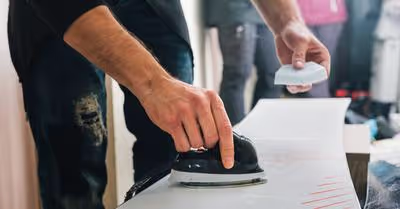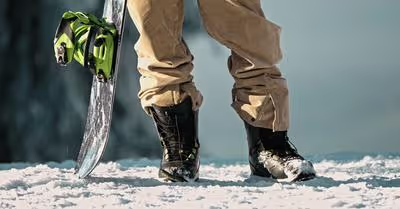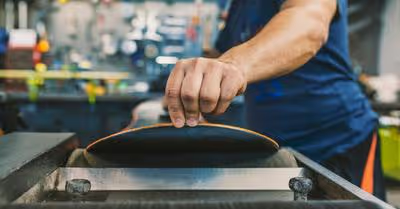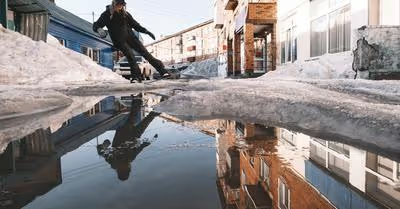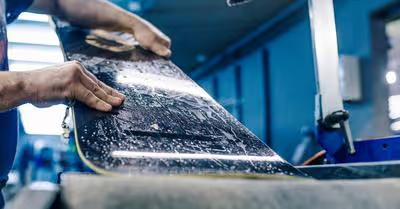Table of Contents
Freestyle Snowboards vs. All-Mountain
Most hot doggers on the slopes prefer a twin-tip, soft flexing board that sports a mellower side cut. For grinding rails or executing spins and tricks, these boards are usually shorter, lighter, and have more flex.
These boards are ideal for terrain parks and street riding. Many snowboarding manufacturers provide a good variety of freestyle snowboards.
On the other hand, all-mountain boards are used by the majority of snowboarders. They're the best possible snowboards for beginners because they're so adaptable, allowing you to figure out what terrain suits your style best.
The top all-mountain snowboards appeal to riders who want one board that can do everything, with a little set back stance, generally a directional flex, and a somewhat deeper side cut.
The greatest all-mountain snowboard can take you everywhere, whether you want to ride groomers all day, hit the park or pipe, or go backcountry.
Freestyle Snowboards
A freestyle snowboard's design symmetry ensures that it performs as well in either direction while riding, taking off, or landing. The soft to medium flex of these boards enables more expressive freestyle jibbing and riding in the snow.
To survive collision with rails, they're frequently made with more bomber edge and base constructions, as well as reduced swing weight for smoother spins.
Freestyle boards come in a variety of camber and flexes profiles, and are frequently classified as rail or jump specialized. Jump boards offer a more responsive and energetic flex pattern than rail boards, making them better for strong landings and forceful impacts.
Freestyle boards have a lot of flex. Freestyle boards have a more proportional nose and tail width than all-mountain boards, which have a more tapered tail. They also have greater flex and a more centered stance. Edge construction varies widely from freestyle to all-mountain.
Investigating the variations in how they are created may help you choose which board is most suited to your style.
It should also be noted that Freestyle boards are practically twintip, in that the tail and nose are the same form (all being more directional, as previously stated).
However, the issue of pop is no longer as relevant as it was because modern material technology allows both types of planks to be poppy, with varying degrees of elasticity and stiffness accessible both torsionally and longitudinally.
Freestyle boards are softer than all-mountain planks to allow for simpler presses and other maneuvers, whereas all-mountain planks require more stiffness to cut through the snow at high speeds.
All-Mountain-Freestyle riders will benefit the most from True Twin boards. It will feel precisely the same riding switch as riding in your typical way because it is totally symmetrical in design.
If you ride freestyle, you'll probably be switching a lot, especially when preparing for or landing 180s and 540s, doing tricks on or off rails, as well as in the pipe with better results.
All-Mountain Snowboards
All-mountain snowboards are made for riders who want a single board that can handle a variety of riding styles as well as different mountain terrain.
While this board might not provide the ideal performance in deep powder, as is the case with a powder specialist snowboard, it outperforms most types of boards.
The same can be said for handling a rail as well as a terrain park board. All-mountain boards have a medium flex, which allows them to carve and retain an edge, float well in snow, and be fun and forgiving enough to enjoy in the park. This is because they're made to be used in both ways.
Some directional twins have a centered stance (known as a "Mountain Twin" - a phrase popularized by Arbor, who had a number of "Mountain Twins" in their lineup).
Anyone who rides all-mountain-freestyle or all-mountain will benefit from a directional twin board. It won't be as comfy to ride switch, but you'll be able to handle it just fine.
All-mountain snowboarders and freeriders are the most common users of directional boards. You'll be traveling in one way for the majority of the time, if not all of it.
The board is also designed to make riding in one direction more enjoyable, especially for powder, speed, and carving.
Setback
A centered stance is found on a freestyle snowboard 99.9% of the time. That is, you will be totally centered on your board when riding. This is because freestyle riders frequently ride in a switch position.
Ask any freestyle rider, and they will tell you that a centered stance is the ideal stance for riding switch. It's also simpler to hit jibs and execute spins with a centralized posture.
The majority of all-mountain snowboards are not centered. They frequently take a posture that is set back. They seldom, however, set back a significant amount. A setback stance of anything between 5mm and 20mm is typical for an all-mountain snowboard.
The Shape
All-mountain boards are more likely to be directional twins. Though all-mountain snowboards exist in practically every form imaginable, directional twins are the most popular, with the directional shape coming in second.
A real twin form is almost often found on freestyle boards. If not an actual twin, an asymmetrical twin is the next best thing (which is really close to being a true twin).
Also, when selecting a freestyle board, you should select one that is a few millimeters shorter than your "regular length." With a shorter board, it's easier to fling the board around for tricks. The all-mountain length is the same as the normal length.
You'll want an all-mountain board that's somewhere between a freeride and freestyle length to find a balance between all types of riding.
Softer Flex
The flex of freestyle snowboards is usually medium-soft, with 1 being the softest on the rating chart. Some jib-oriented freestyle boards may go even softer and aim for a 1-2 out of 10 rating.
All-mountain snowboarders must be able to ride in the park and freestyle, but they must also be able to ride groomers and, in certain cases, the backcountry. As a result, most all-mountain snowboards feature a medium flex (5-6 out of 10).
This is not too stiff that you can't do tricks or hit jibs, but firm enough that you receive the edge-hold, speed, and stability at high speeds that a stiffer flexing board provides.
Tapered Boards
This one is aimed squarely towards freeriders and those looking for a powder-specific board. In powder, a tapered directed form is typically used to promote the sinking of the tail and the rising of the nose. It's particularly useful for tree movement because it has a little flicky tail that you can kick about.
A tapered directional form is similar to a directional shape but with one key difference: the nose's contact point will be broader than the tail's widest point. On a tapered directional board, the nose and tail are frequently different.
The Base
The choice between an all-mountain board with an extruded base is mainly based on the amount of money you're prepared to spend on a snowboard. Sintered bases aren't required for all-mountain riders, but they are nice to have if you're prepared to spend a little more money.
Some freestyle snowboards have sintered bases, while the vast majority have extruded bases. This is mostly due to the fact that sintered bases cost more to build, resulting in a higher snowboard price – and they are useless on a freestyle snowboard.
Many freestyle riders opt for an extruded base since it allows them to keep their speed under control as they approach obstacles. It is also important to note that extruded bases are also easier to maintain.
The Width
Snowboards vary in a range of widths; to determine the correct size, measure how your snowboard boots fit around the snowboard's waist.
Your boots should extend just slightly beyond the board's edges (approximately 1 – 2 cm on each edge) for adequate leverage while turning if you have the proper size board.
You can have a difficult time getting the board from one edge to the other if your board is too big for you and your boots don't overhang at all. You can wind up dragging your toes and heels if your board is too small and your toes and heels overhang too much, which might lead you to lose control.
Recent Articles



